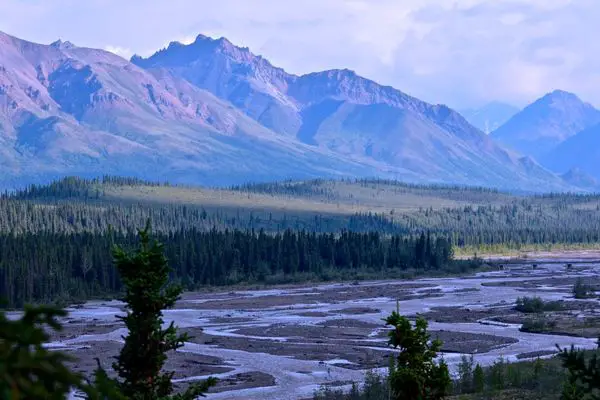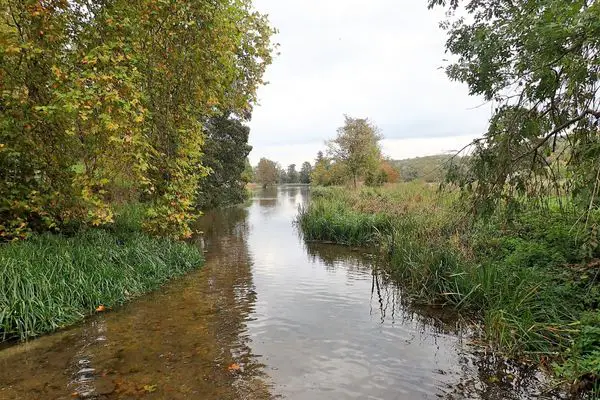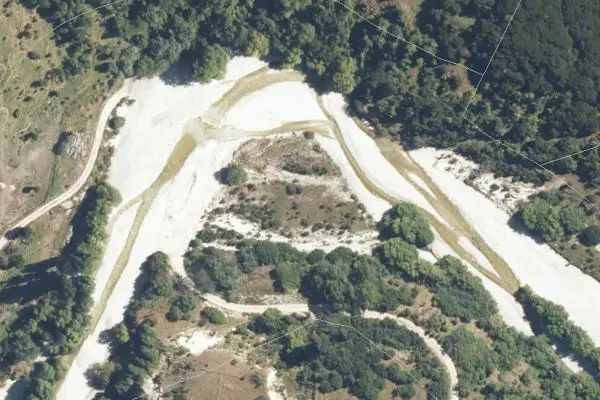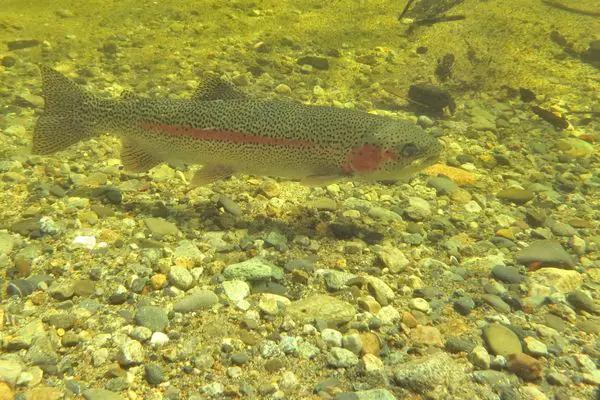Trout fishermen have different names for different types of water, so how do freestone rivers, spring creeks and tailwaters differ?
Can some rivers fall into multiple categories?
Some basic definitions
Creek, Stream, Brook, Kill, Burn
There is really no difference between a creek, stream or brook when it comes to trout fishing characteristics. I consider them all to be the same.
Some people might claim a stream or brook is swifter flowing, and a creek is more stagnant but that is not really the case. They are just names.
Generally speaking they are smaller than a river, and are not usually navigatable by boat.
Some less common names include Kill which is common in areas of Dutch heritage, or burn which is common in places with Scottish heritage.
I do know of some streams and creeks, that are larger than certain rivers. I also know of one stream, that for most of the year contributes most of the water to the ‘river’ it flows into. It will be highly unusual to find a river flowing into a stream or creek, but vice versa is the norm.
Other than size, there is really no difference when it comes to trout fishing characteristics.
Overflow, Diversion
These commonly referer to man made ‘channels’ that divrit the flow of a river or stream elsewhere. They are typically fairly straight and were designed to move water fast.
Some only flow during times of flood, while others do flow year round.
From a trout fishing perspective, if the flow is stable, and the river is not trapped between concentere they can develop worthwhile fisheries. Natural watercourses, due to their meandering normally do provide better fishing.
What is a freestone river?
A freestone river is a waterway that is predominantly fed by either direct rainfall run-off or snow melt.
The key characteristics of a freestone river are highly fluctuating flow levels and temperatures. In the spring, when the snow is melting, freestone rivers typically flow high with the water icy cold.
By late, summer the freestone river will be flowing low, and the water will be significantly warmer.
One other key trait of freestone rivers is that they are typically unmodified, there are no dams blocking the passage of migrating fish.
What is a braided river?

A braided river is a large river with multiple channels that divide before merging again. The beds are typically extremely unstable and most (all) are also freestone rivers. They usually occur when the gradient of the land is rather steep.
The most famous braided rivers are probably in Alaska and New Zealand. Due to all of the channels, they can be intimidating to fish, and very exposed to the wind but they can hold impressive numbers of fish.
- For more information on fishing braided rivers check here
What is a meandering river?
Unless trapped between concrete walls, all rivers meander naturally.
But the term meandering river is usually kept for rivers that keep to a single channel that meanders through the countryside like a snake.
The outer edge of a meandering river is typically deep, with a steep freshly eroded face, while the inner of the meander is slower flowing. The water is shallower, and often with a nice beach to walk along.
Another feature of meandering rivers is oxbow lakes, these occur when the river takes a shortcut and cut’s an entire meander off, creating a spring fed lake where the river once flowed.
What is, and the differences between spring and limestone creeks?
Spring creeks offer stability in both flow and water temperature. They typically offer excellent habitat for trout and crystal clear water for easy sight fishing.
A spring creek is typically a waterway that gets most of its water from springs. Spring creeks can form in a number of ways, one of the most common variations is the limestone creek that gains its water from porious limestone caves.
Other spring creeks form, when river channels become cut off from the headwaters blocking the surface flow. Although, because the water level is still high the springs will bubble through the gravel keeping the channel alive.
One final type of spring creek can occur when a landslide dams a river causing a lake to form. What usually happens is that the lake builds up behind the dam, until it breaches slowly eroding it away.
But sometimes, the dam is too high for the lake to breach, so the water slowly seeps through the dam creating a spring creek downstream. There is a famous trout river in New Zealand that has this origin.
- Click here for advice on how to spot more trout
- Click here for 10 Tips for Fishing Spring Creeks
- Click here for how to nymph fish Spring creeks
What is a limestone stream?

A limestone stream, sometimes referred to as chalk streams or creeks, according to fly fishers vocabulary is a spring creek that gains its waters from underground springs that flow through limestone caves.
All limestone creeks are spring creeks, but not all spring creeks are limestone creeks.
Limestone creeks have stable flows and the temperature remains cool year round. A limestone creek will likely be cooler than a nearby freestone river in the summer, but warmer in the winter and early spring.
Limestone creeks are also very unlikely to flood, so their beds are stable and can be rich in plant and vegetative growth.
The most famous chalk or limestone streams are typically found in Southern England and Pennsylvania.
The presence of limestone does not make a limestone creek
I am aware of streams that are named ‘limestone creek’, but are not limestone creeks based on the commonly accepted definitions. Such streams often gain their names because their beds are rich in limestone but they are not actually spring fed.
There are also plenty of freestone rivers that flow through limestone country, so will have beds rich in limestone, and again, they are not spring fed so they are freestone rivers.

What is a tailwater?
Tailwaters, generally offer excellent trout fishing. Water temperatures are more stable, and extreme in flows are evened out by the dam. There is also usually plentiful food getting washed downstream from the lake above.
A tailwater is the river downstream of a dam or lake. Tailwaters typically provide good year round fishing, because the water is usually discharged from deep in the lake where the temperature remains more stable. This makes tailwaters great places to fish in the summer heat, or the winter cold.
I want to say that tailwaters are also more consistent in flows because the peaks of extreme droughts and massive floods are leveled out by the dam.
While the extremes in flows are staberlized, the rate of flow can greatly change throughout the day, because the rate water is discharged is directly related to the amount of electricity being generated.

